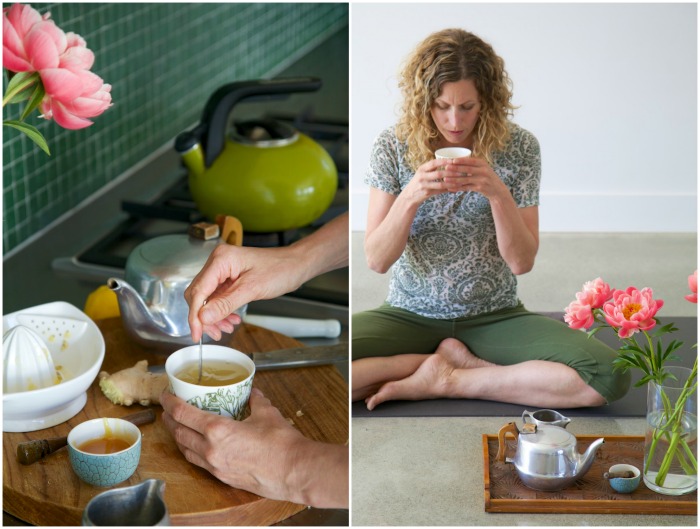Imagine for a few moments that every item on your to do list has been ticked, there are no imminent actions to complete. Close your eyes for 30 seconds and visualise this, perhaps even imagining sitting down in your favourite chair.
- How does it feel?
- When was the last time you felt like this?
- How often do you feel like this?
There is a palpable inner atmosphere when we move into a place of just ‘being’ from the busy ‘doing’ aspect of our lives. I am fascinated by the balance between these two states and it has been a constant challenge for me to take the sense of being that I might find on my meditation cushion or yoga mat back out into my relationships and the external world.
A state of Yoga or union can only be achieved by balancing the dual qualities of doing and being; Abhyasya and Vairagya. Vairagya means to engage in life in a focussed way; this requires the activation of the Sympathetic Nervous system. Abyasya involves an element of surrender and letting go which lives in the parasympathetic aspect of the Autonomic Nervous system. Both elements are necessary.
For many of us, the stress and busy-ness of our lives has activated the emergency sympathetic part of the nervous system, that is the part that activates the ‘fight, flight, freeze’ (FFF) response. Designed to serve us in times of emergency and danger, such as warding off a bear from our cave, this part of the autonomic nervous system prioritises bodily functions such as sweating, blood flow to the muscles and muscle tension so that we can flee, protect ourselves or hide. When we are in this state the body stops ordinary activities such as digesting, detoxifying, eliminating, and building immunity which are all part of the parasympathetic nervous system. Many of us have activated the FFF response through the every day stresses in our lives and so the body believes it is in constant danger. As a society we seem to have forgotten how to switch back to the parasympathetic nervous system often referred to as the ‘Rest and Digest’ response. Only when we activate this response do we have the ability to heal, repair and tune into a sense of wellbeing.
Don’t get me wrong – the sympathetic part of the nervous system isn’t ONLY about this survival response. We definitely need the sympathetic nervous system for just about any activity we participate in but more as a responsive rather than a reactive influence. Both the states of being and doing are a necessary part of being human and there is a bridge that regulates the movement between these two states; the 10th Cranial nerve called the vagus nerve.
The vagus nerve connects the brain to the parasympathetic nervous system and is a key component in returning our bodies to a relaxed state. The speed and capacity of this nerve is known as vagal tone. Low vagal tone makes it harder for the body to sink into relaxation. We can increase vagal tone through exercise as well as meditation, positive thinking, gratitude and loving-kindness practices, hearing positive feedback about ourselves and reflecting on positive experiences that we’ve had. Vagal tone is an important factor in the mind/body integration.
We can also encourage the pathway to activate the parasympathetic response of Rest and Digest by consciously practicing relaxation. Restorative yoga poses encourage a sense of letting go and work with the soft tissues of the body. The digestive organs are gently compressed in some of the poses and so that any ‘stale’ or waste-bearing fluids in those areas are encouraged out of the tissues. Once these materials are freed up, the body is better able to eliminate them. The poses that lengthen and open up the belly area enable new life-giving nutrients to circulate into the cells, stimulating the digestive muscles and increasing the wave like movements in the intestines known as Peristalsis. Also a breath focus during the practice of Restorative yoga can send oxygen deep into the cells of the body and help it to absorb nutrients and excrete waste products thoroughly. Any digestive sound or a gurgling stomach at the end of a yoga practice is a sure sign that the parasympathetic nervous system has been switched on; a successful outcome!

So here are some yoga tools that help us to ‘Be’. I have a copy of them on my fridge door entitled
‘My to be list’!
- Restorative yoga poses
- Breathing centrally and through the organs
- Lengthening the exhale
- Breathing into the back of the body
- Expanding Peripheral vision
- Yawning
- Gratitude practice
I’ll finish with David Whyte, the amazing poet and writer puts it beautifully in his essay entitled ‘Rest’:
“A deep experience of rest is the template of perfection in the human imagination, a perspective from which we are able to perceive the outer specific forms of our work and our relationships whilst being nourished by the shared foundational gift of the breath itself. From this perspective we can be rested while putting together an elaborate meal for an arriving crowd, whilst climbing the highest mountain or sitting at home surrounded by the chaos of a loving family…”
The above text inspired a workshop with my dear friend Nicola Galloway. I wrote a guest blog on her site which you can view here:
http://www.homegrown-kitchen.co.nz/2014/11/11/digestive-morning-drink/





1 Comment
That list is a great reminder, I will refer to it often. I especially find extending the exhale helpful to slow down.